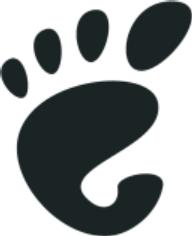 
|
|
|
Making GNOME Accessible -- Opening New Doors At the Workplace for Users with DisabilitiesCupertino, California -- August 28, 2001 -- GNOME Foundation today announced the early access release of the Gnome 2.0 Accessibility Framework. This framework paves the way for a new generation of applications that integrate with assistive technologies -- enabling all users to access the GNOME desktop. Sun's contributions to the GNOME Accessibility Framework within the GNOME open source project further underscores Sun's commitment to the delivery of an accessible desktop for the benefit of all users in the workplace. The GNOME Accessibility Framework includes a comprehensive toolkit and APIs that is comprised of the following two key components:
This built-in extensible accessibility framework provides the foundation for developers to write accessible applications from the ground up, provides built-in accessibility support for existing GNOME applications, and enables assistive technologies developers to adapt their enabling technologies to run on any UNIX platform. "GNOME 2.0 will break down accessibility barriers" said Havoc Pennington, Chairman of the Board of Directors GNOME Foundation. Integrating the Accessibility Framework into the fabric of GTK+, will enable developers to easily write accessible applications". "Because of the object- oriented structure of GTK+, it is easy for application developers to incorporate accessibility capabilities without having to change the architecture of their software" said Owen Taylor, Engineering Lead for GTK+ at Red Hat. "This will lead to more accessible applications being developed quickly for the benefit of the entire GNOME user community". "Our goal was to build accessibility into the initial design, giving the GNOME application developers uniformity across components by implementing one standard API, while at the same time providing extensibility" - said Robert O'Dea, Director of GNOME engineering at Sun Ireland. "Also, our design philosophy took into consideration the many graphical toolkits that could take advantage of the agnostic approach of the AT SPI toolkit -- this strategy saves time by eliminating the need to reinvent accessibility for each platform. Developers can get started with the Accessibility Framework now. We have documentation and engineering support in place to help make the upcoming release of GNOME 2.0 Accessible by first customer ship. In addition, our Accessibility Lab is in place to help assistive technology developers to write to the AT SPI while leveraging available Sun hardware and software solutions". "Nobody builds a sidewalk without curb cuts we're taking the same approach with software - making GNOME 2.0 accessible will open new doors for users with disabilities", said Mike Rogers, Vice President of Webtop and Applications Software at Sun. "With the growing worldwide popularity of the GNOME desktop, it's important that all users have the freedom to interact with this powerful user environment, using various assistive technologies to gain easy access to information and applications, as well as collaborate with team members". "As use of GNOME spreads to more work environments, accessibility for employees with disabilities becomes increasingly important said Gregg C. Vanderheiden Ph.D. Director Trace R&D Center at the University of Wisconsin". "SUNs leadership and efforts to ensure that GNOME is accessible is great news to both Solaris and Linux users who have disabilities".
Availability:
GNOME Accessibility project status and documentation, please visit:
Documentation:
Keyboard navigation documentation:
About GNOME GNOME is a free software project (also referred to as open source software) that is developing a complete, easy to use desktop for Linux (GNU/Linux), BSD and a variety of other Unix and Unix-like operating systems. The GNOME desktop is used by millions of people around the world. More than 500 computer developers, including over 100 full-time, paid developers, contribute their time and effort to the project.
About the GNOME Foundation More information on GNOME is available at www.gnome.org |
|
|